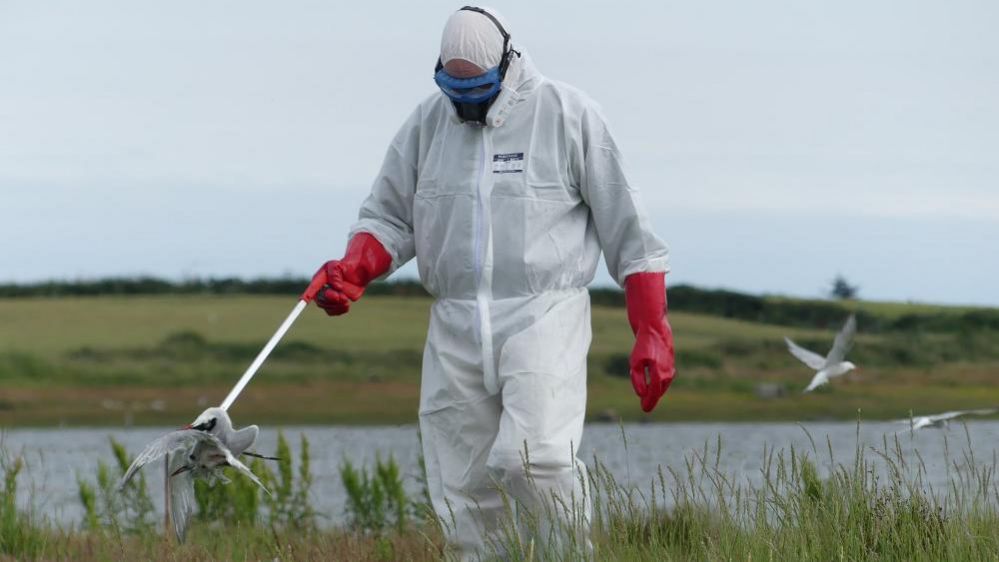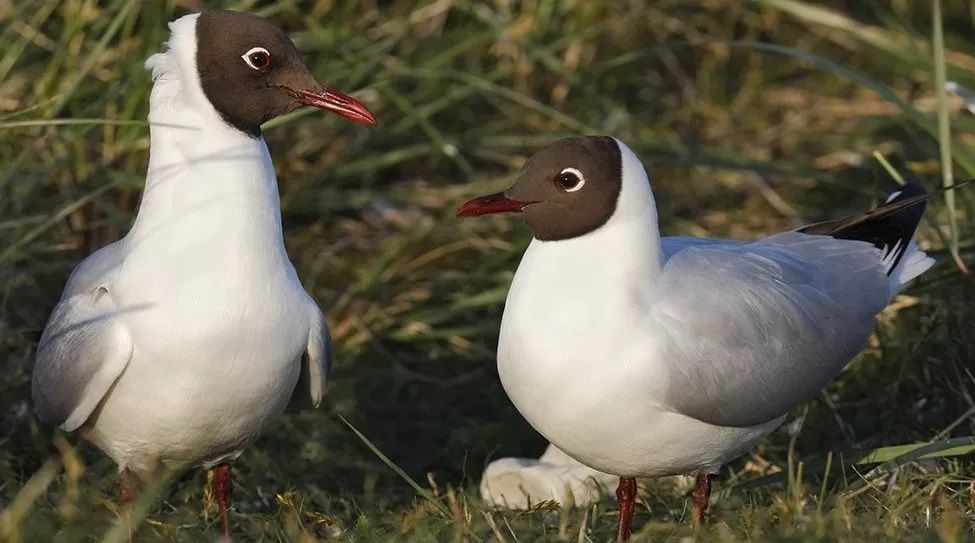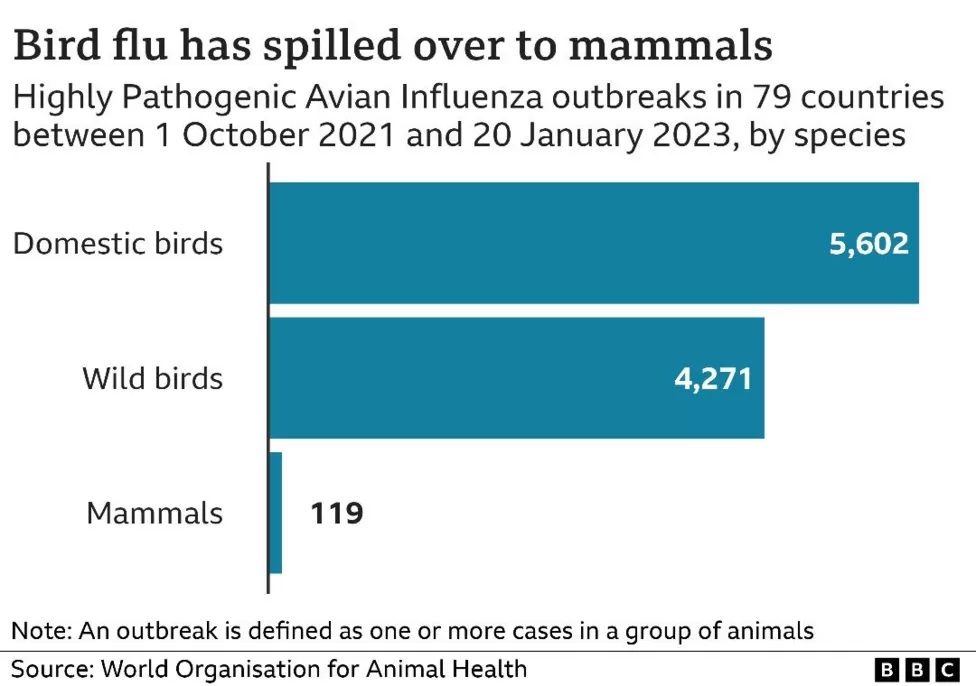 Concerns have been raised as thousands of seabirds congregate to breed on Irish coasts
Concerns have been raised as thousands of seabirds congregate to breed on Irish coastsBirdWatch fieldworkers have collected hundreds of dead birds in recent weeks
Image Birdwatch Ireland
From BBC by Matt Fox
A conservation group in the Republic of Ireland has warned of "alarming and unprecedented outbreaks" of avian influenza.
BirdWatch Ireland said the highly pathogenic H5N1 strain of the virus is devastating key Irish seabird colonies.
The group manages the four most important tern colonies in Ireland.
Hundreds of dead birds have been discovered in recent weeks with carcasses testing positive for bird flu.
In a recent statement, external the group said while it was early to assess the full impact, more than 160 adult common terns and 450 chicks were found dead at a breeding colony at Lady's Island Lake in County Wexford.
It also said the disease was threatening sandwich terns and roseate terns nesting there.
BirdWatch added it is concerned by the long-term consequences of an avian flu outbreak on Irish seabirds.
"A poor breeding season at a tern colony, with few chicks surviving, is unfortunate, but can be compensated for by better breeding success in subsequent years.
"However, the deaths of large numbers of adult terns of breeding age has a much bigger impact, and recovery will take a long time."
The Department of Agriculture, Food and the Marine eased specific biosecurity measures to mitigate the spread of avian influenza on 1 June.
The department has been contacted for an update on bird flu in the Republic of Ireland.

A number of black-headed gulls tested positive for the virus in Northern Ireland last month
Getty images
Belfast's Window on Wildlife nature reserve was closed to the public last month after a number of gulls were found to have died from the virus.
Further infections were detected in Comber, Coalisland, and Magherafelt.
Northern Ireland’s chief vet, Dr Robert Huey, called on all bird and poultry keepers to immediately step up their biosecurity measures and remain vigilant against the latest threat of avian flu.
He said the latest findings are a "stark warning to all of us" that avian influenza is a "constant and dynamic threat".
A recent update from the Department of Agriculture, Enviornment and Rural Affairs (DAERA) said there is now an now an increasing likelihood of incursion into kept flocks.
"The findings at locations near Lough Neagh present the greatest concern, as they are in close proximity to high-density areas of commercial poultry premises."
If members of the public find dead waterfowl or other wild birds, DAERA advises they should not touch the carcasses but take immediate action to report them to the department.
DAERA has been contacted for an update on avian influenza in Northern Ireland.
Health services in the Republic of Ireland and Northern Ireland took part in an exercise in County Louth last month to enhance cross-border preparation for future incidents of bird flu.
What is bird flu?
Bird flu is an infectious disease of poultry and wild birds that has been around for a century. It usually flares up in autumn before fading away in spring and summer
The H5N1 virus, which is the most prevalent strain now, was first reported in China in 1996
It can spread through entire flocks of domestic birds within a matter of days
Last year saw the biggest ever outbreak of bird flu in the UK and the world
Dozens of different species of wild birds were hit, including golden eagles, buzzards, herring gulls and gannets
Bird flu restrictions, which were imposed across most of the UK this year, were eased in April but experts have advised the H5N1 virus is still circulating, posing an ongoing risk to wild birds
In the UK, a number of wild mammals have died, external after being infected with H5N1
The World Health Organization (WHO) says H5N1 outbreaks have led to several hundred human cases, and many human deaths, since 1997
The further spread of the H5N1 virus will have to be monitored closely to see whether it is mutating into a form which can spread amongst humans

Links :
- BBC : 'Alarming and unprecedented' Irish bird flu warning
- WHO : Ongoing avian influenza outbreaks in animals pose risk to humans
- Cell : Avian influenza spread and seabird movements between colonies
- News Medical Life Sciences : Research reports spillover of highly pathogenic avian influenza A(H5N1) into marine mammals in the northeastern United States / What is the risk for symptomatic H5N1 virus infection in humans?
BBC : Avian flu warning to tourists as birds face 'catastrophe'
ReplyDelete